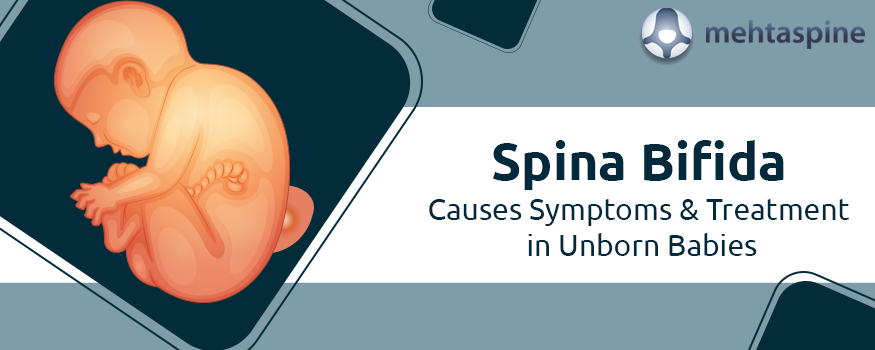Spina Bifida Causes Symptoms & Treatment in Unborn Babies
Spina bifida is a birth defect where the spinal column is not adequately formed in the baby. Due to the inadequate formation of the spinal column, the section of the spinal cord or spinal nerves can be exposed and formed outside the body. It is one of the leading causes of permanent disability among spinal deformities. And to make it worse, the exact reasons for the deformity are not known yet which makes it even dangerous if undetected early.
“This defect usually develops in the first month of the pregnancy and making it possible to detect it in the early stages”, says Mr Jwalant S Mehta, an expert in deformity correction in the UK. Fortunately based on the type , spine specialists have identified a few risk factors and have come up with treatment options. Read on to know more the types and the risk factors.
Types of Spina Bifida
Spina bifida occult: This is the mildest form of the Spina bifida where a small gap exists between the spinal bones. In most cases, it may not be even identified unless it shows up in imaging tests performed for unrelated conditions.
Myelomeningocele: This is the severe form of Spina bifida where the spinal canal opens ups near the lower back regions exposing the spinal nerves that form a sac on the baby’s back. As a result, a baby with this form is more prone to life-threatening infections, bowel dysfunction, bladder control problems, and even paralysis.
Meningocele: Meningocele is also a mild but very rare form of Spinal bifida where the spinal fluid bulges through the spinal opening. Since nerves are not exposed to this defect, the symptoms are not as severe as the condition that is yet to come. Common symptoms of this type of spinal Bifida include bowel and bladder problems.
Diagnosis : Prenatal testing done on pregnant women detects the Spina Bifida condition right in the womb. In a few cases after careful study, surgeons may even perform the correction surgery before the baby is born. Being a mild condition occult may not be detected until the baby is born.
Risk Factors: No direct causes of Spina bifida have been identified yet. Some of the risk factors that were hypothesized include:
- Lack of folic acid in the diet for pregnant women.
- Injection of seizure medication during pregnancy.
- Age of mother (teen mothers are at higher risk)
- Diabetes and seizure disorders
How Common is Spina Bifida in the UK?
It is estimated to affect 7 in every 10,000 live births in the UK. Due to rapid improvement in treatment for Spina bifida in UK, babies now live longer and have improved quality of life even though they need lifelong treatment.
Treatment for Spina Bifida:
As mentioned earlier, in a few cases severe forms of Spina bifida can be treated with correction surgery right in the womb. After the birth Myelomeningocele will require surgery to correct the spinal defect and subsequent therapy and treatment by a specialist to control the infections and other symptoms. For more information on spinal deformity correction in the UK, you can contact Children & Adult Spinal Surgeon in UK Mr. Jwalant S Mehta


